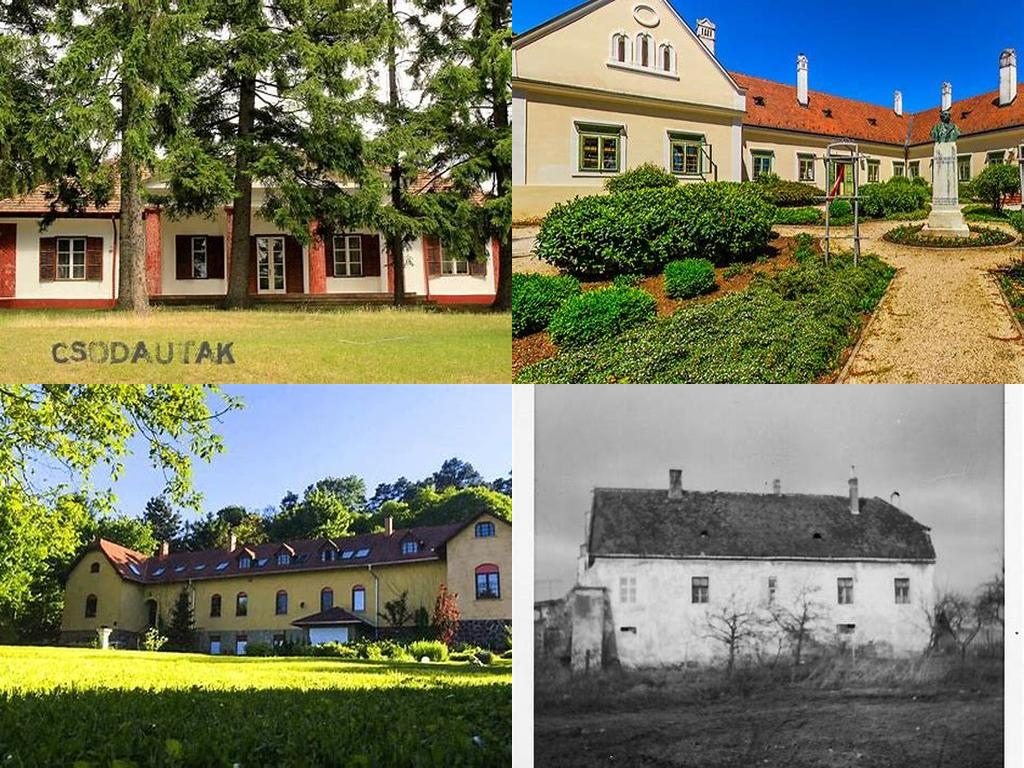
Polonkay-kúria, nestled in the gentle embrace of the Borsod-Abaúj-Zemplén hills, is the kind of place you don’t hear about in every travel blog—yet it’s exactly the sort of address you stumble upon once and later find yourself telling stories about. You’ll find this somewhat understated yet intriguing mansion right on the edge of Szendrőlád, a village that’s comfortably distant from Hungary’s hustle but brimming with a quiet sense of authenticity. If you’re the type who feels at home amid rustling trees, faded grandeur, and the sense that history might peer at you from behind the next curtain, you’ll want to carve out an afternoon for this spot.
The mansion itself traces its lineage back to the latter decades of the 18th century. The Polonkay family, whose name still lingers with a certain gravitas in the region, had it constructed as their country residence, designed to both reflect and shield themselves from the dramatic uncertainties of their time. Local lore holds that the Polonkays were keen observers of the ebb and flow of the surrounding land, and perhaps they chose the spot for its strategic view—sitting as it does just above a gentle bend in the Bódva river, with the hills rolling out in pleasing, painterly shades toward the horizon. Even now, you can stand beneath the broad porch and imagine the sound of horse-drawn carriages cracking over the gravel, guests in heavy coats carrying the dust of the countryside through the great wooden door.
From a distance, the mansion retains a dignified, slightly timeworn beauty. The neoclassical touches on its whitewashed façade are softened by generations of wind and rain, and the house seems to wear its age like a badge rather than a burden. Inside, you’re greeted by high-vaulted ceilings, rooms arranged in that unmistakably symmetrical style of the period, and—if you’re lucky and the caretaker is around—a series of tales that fill the space with a sense of lived experience. Though much of the original furniture has disappeared through the years, vestiges remain: an ornately carved wardrobe here, faded fresco remnants there, and always the thick stone walls that kept winter’s chill at bay.
The story of Miklós Polonkay deserves at least a passing mention. He was among the last of the direct family line to spend his days wandering these halls in the early 20th century, and it’s said he was a spirited yet melancholic figure, especially as seismic tides of societal change swept across Hungary. The mansion weathered wars, occupations, and the gradual departure of the old world. Its survival owes a considerable debt to the fact that Szendrőlád, with its remoteness, rarely found itself squarely on the path of armies or revolutionaries.
One thing that sets Polonkay-kúria apart from countless other manor houses and family estates scattered throughout Hungary is its lack of artifice. There’s no velvet rope, no manufactured spectacle. The gardens, untamed rather than manicured, are interspersed with wildflowers, chestnut trees, and whatever else nature thought fit to bestow. In spring, the grounds hum with the sibilance of insects, and in late summer, you might catch the scent of ripe fruit wafting from the neighboring orchards. The local storks, who’ve been nesting atop the old chimneys for as long as anyone can remember, might even glide by as you explore.
If you move quietly enough, you’ll notice that every room speaks in its own dialect. There’s the salon with its tall windows, partially eclipsed by time’s gray lace curtains, where it’s not hard to imagine tense family gatherings or evenings filled with laughter and song. The library has long since surrendered most of its volumes to local collectors and national archives, but it exudes a mood of studious retreat; you can still glimpse ink stains on old desktops and the lingering scent of dry parchment in the air. And if you ask the right questions, you might even be shown the faded photograph of a garden party circa 1912, when the rows of roses were pruned to perfection and the local gentry dressed in white.
Beyond history, the mansion is a living part of present-day Szendrőlád. The village periodically uses the space for art exhibitions, chamber concerts, and school celebrations, bringing together the old bones of the mansion with the daily rhythms of community. Step outside, and the village itself rewards lingering with its easy pace and genuine smiles from residents who believe in the worth of their shared heritage.
So if your travels draw you into the heart of northeastern Hungary, detour from the main roads and stroll up the tree-lined path to Polonkay-kúria. It is the kind of place where history is not a static artifact but a living, breathing companion—and where the silence of the halls, punctuated by birdsong and the faint creaks of old beams, feels both profound and welcoming.





